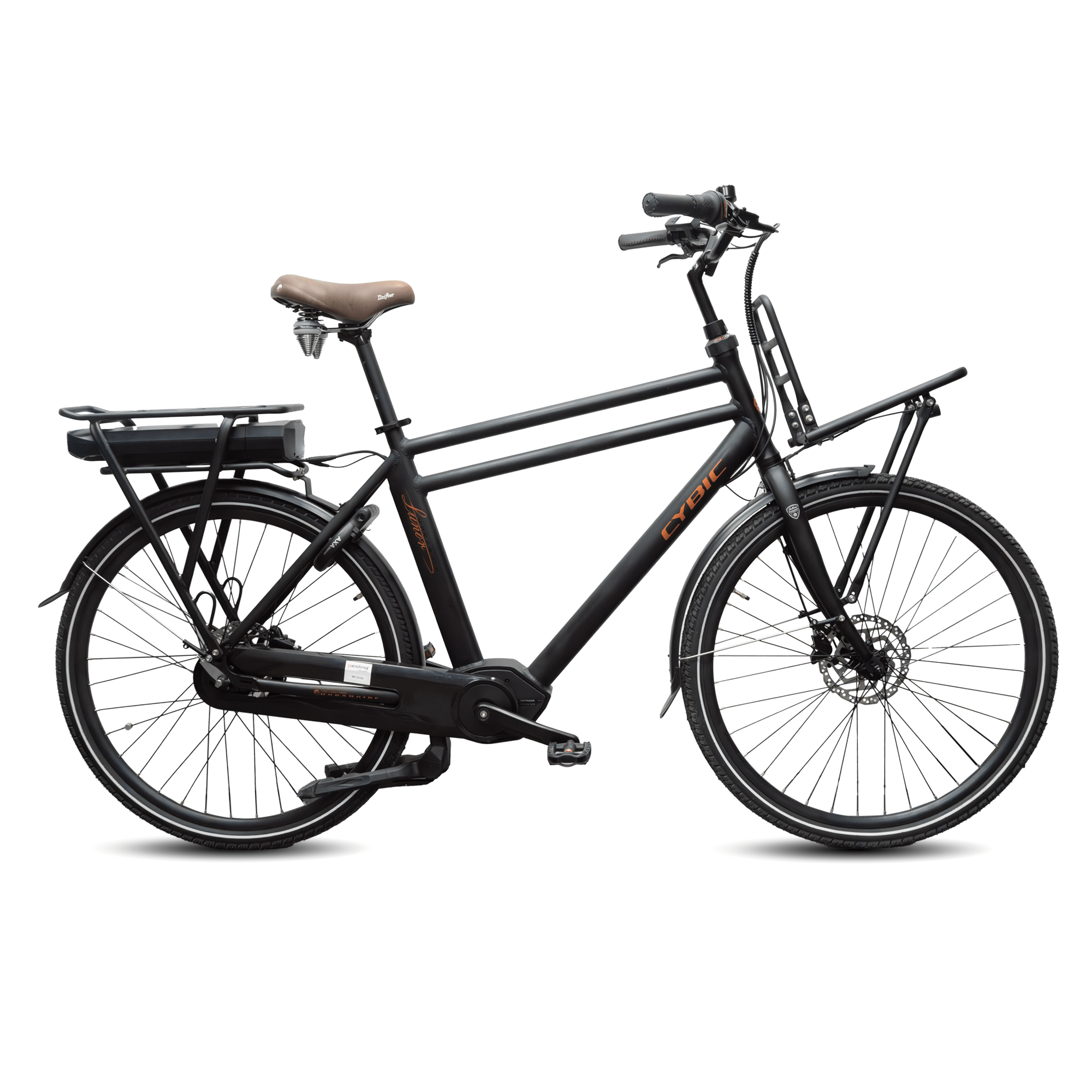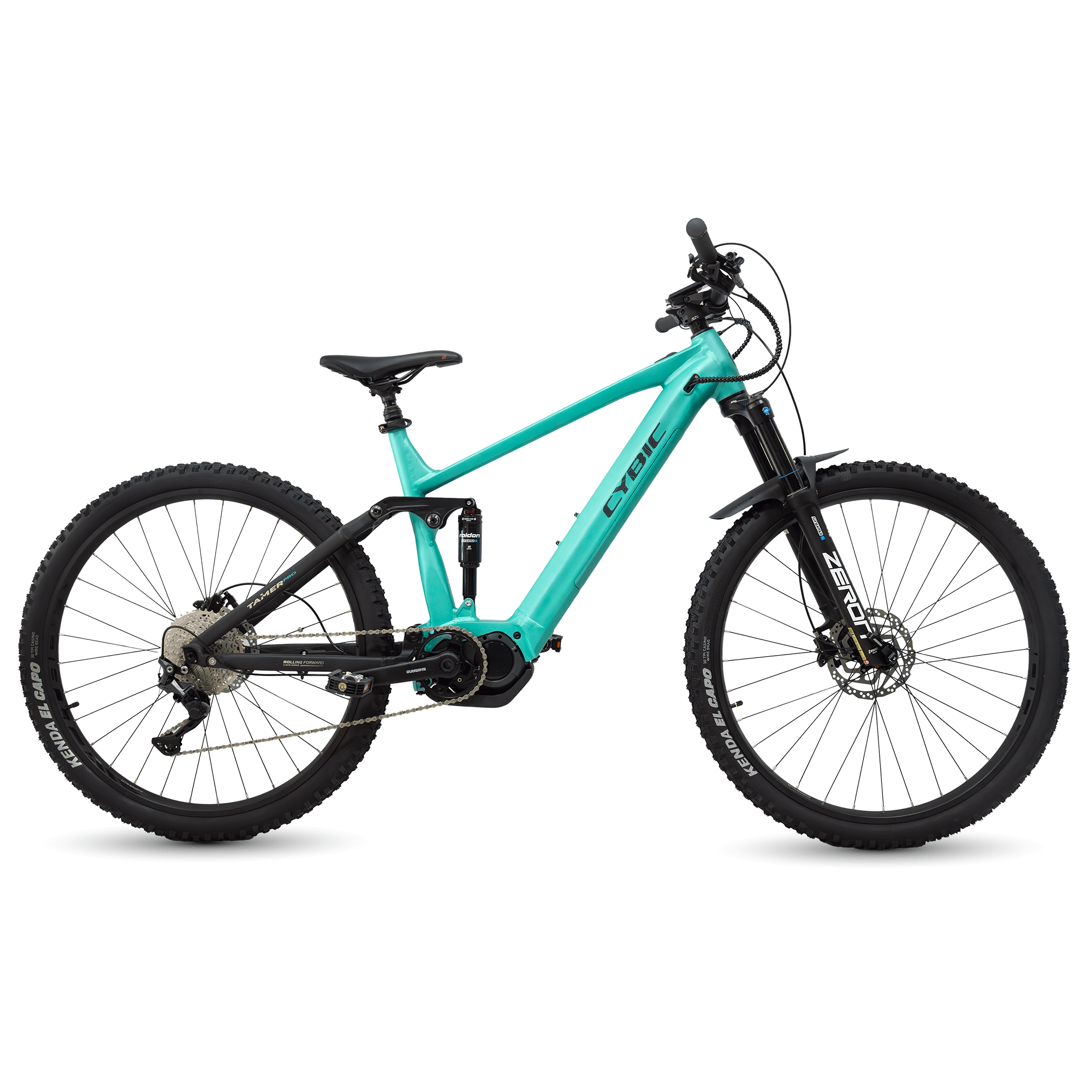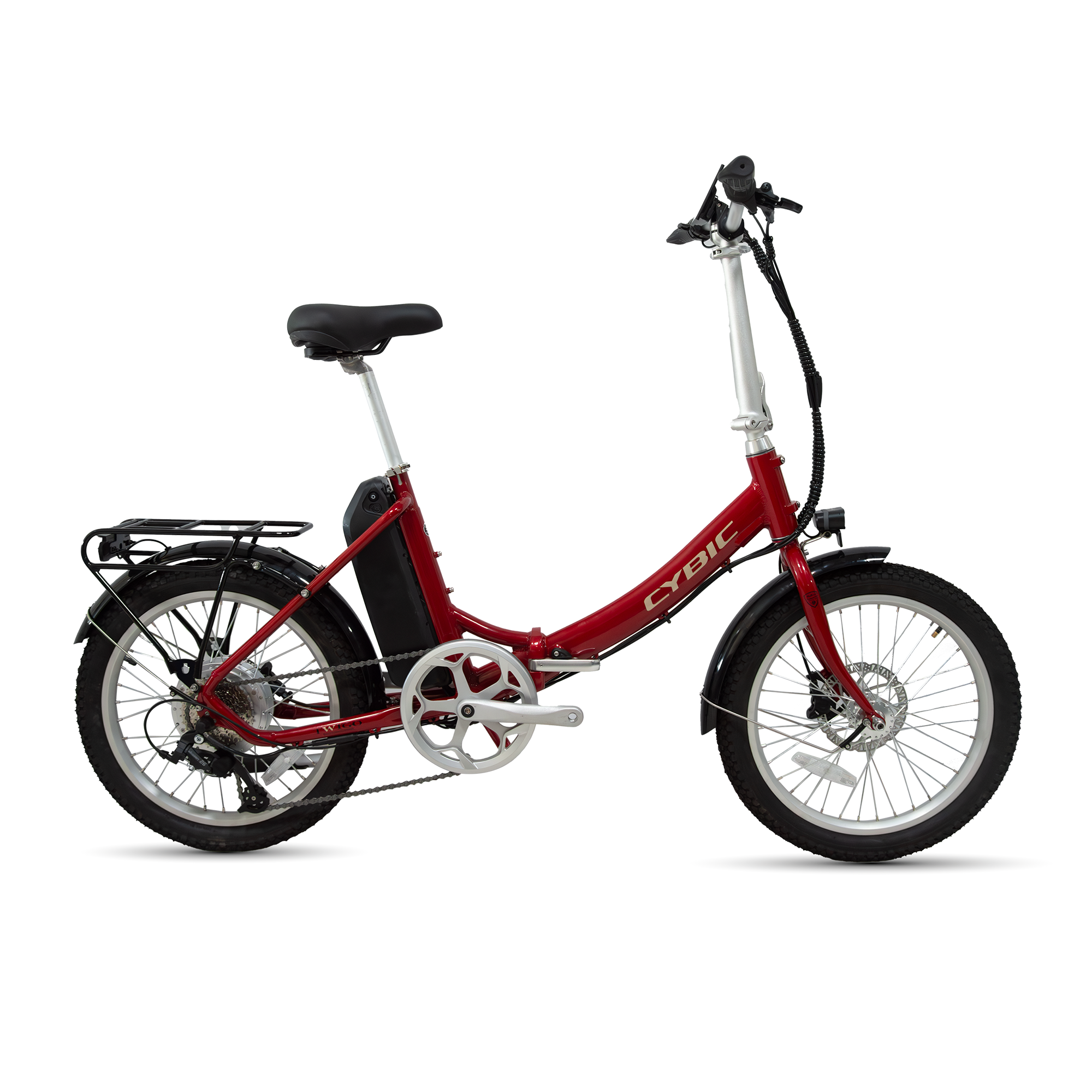Views: 70 Author: Site Editor Publish Time: 2025-06-11 Origin: Site










E-bikes are becoming increasingly popular as an eco-friendly alternative to cars. However, as more people turn to these electric bikes, questions arise about their impact on traffic. In this article, we’ll explore whether e-bikes can contribute to traffic congestion and block public roads, and what factors play a role in this issue.

What is an E-Bike?
An e-bike is a bicycle equipped with an electric motor that assists the rider while pedaling. There are several types of e-bikes, such as pedal-assist and throttle-only models. Pedal-assist e-bikes provide power only when the rider pedals, while throttle-only e-bikes can be powered without pedaling.
E-bikes come in different motor capabilities:
CYBIC Lumos M 700c: Pedal-assist only, designed for smooth and powerful assistance, ideal for city commutes.
CYBIC Tamer Pro 29: Throttle-controlled, with speeds suited for both city streets and off-road conditions.
CYBIC Twigo 20: Pedal-assist, with higher motor output for various terrains, including urban roads and hilly routes.
Popular models include city commuter bikes, mountain bikes with powerful motors for off-road use, and folding e-bikes for easy storage. As CYBIC highlights, e-bikes are designed for various uses, whether it's for daily city commuting or outdoor adventures.
| Model | Motor Type | Speed (km/h) | Ideal Use | Key Feature |
|---|---|---|---|---|
| CYBIC Lumos M 700c | Pedal-assist only | Up to 25 km/h | City commuting | Smooth and powerful assistance |
| CYBIC Tamer Pro 29 | Throttle-controlled | Up to 25 km/h | City streets & off-road | Versatile for both city and off-road |
| CYBIC Twigo 20 | Pedal-assist | Up to 32 km/h | Urban roads, hilly routes | High torque motor for various terrains |
E-bikes offer several benefits to road traffic. Their lower environmental impact helps reduce the number of cars on the road, promoting cleaner air and less congestion. With more people opting for e-bikes, cities can experience less traffic, especially during rush hours.
However, there are potential downsides. E-bikes can move slower than cars, which might cause slight delays in busy streets. In certain cases, e-bikes may interfere with motor vehicles, particularly if they are not using dedicated bike lanes.
Despite these concerns, e-bikes are becoming an efficient transportation option for city commuters. Their motor assist makes it easier to navigate urban roads, helping riders avoid heavy traffic and reducing overall congestion. As CYBIC emphasizes, e-bikes like the Lumos M 700c and Twigo 20 are ideal for short, urban commutes, offering a smoother and faster way to travel compared to traditional bicycles or cars.
Speed and Road Regulations
E-bikes come in different speed limits, depending on their class and motor size. For instance, models like CYBIC Lumos M 700c are designed for city commuting with a maximum assist speed of around 25 km/h, which is generally slower than regular traffic but efficient in urban environments.
E-bike regulations vary by region. In many areas, e-bikes are classified into three categories based on motor power and speed:
CYBIC Lumos M 700c: Pedal-assist only, with speeds up to 25 km/h.
CYBIC Tamer Pro 29: Throttle-controlled, with speeds up to 25 km/h.
CYBIC Twigo 20: Pedal-assist, reaching speeds of up to 32 km/h.
These regulations help determine where e-bikes can be ridden and at what speed. For example, higher-speed models like the CYBIC Tamer Pro 29 can be a challenge in high-speed lanes but may be better suited for areas with dedicated bike lanes. Some models, like CYBIC Twigo 20, feature powerful motors with high torque, which can tackle difficult terrains but may disrupt traffic flow in urban settings.
Traffic laws regarding where and how fast e-bikes can travel directly impact their role in traffic flow, especially in areas without bike lanes.
E-Bike Use in High-Traffic Areas
In urban environments, e-bikes offer a solution to congestion. Cities like Amsterdam and Copenhagen have well-developed bike lanes, allowing e-bikes to move freely without interfering with motor vehicles. These cities often show how e-bikes improve traffic flow by reducing the need for cars, especially in busy areas.
However, e-bikes can become a hindrance in areas without proper infrastructure. In cities with heavy traffic, such as during rush hours, e-bikes may struggle to keep up with motor vehicle speeds. Their relatively lower speed can sometimes cause delays, especially when they share lanes with faster-moving traffic.
In CYBIC-designed models, it’s highlighted that e-bikes can be particularly beneficial for city commuting, offering eco-friendly alternatives to cars. They reduce the number of vehicles on the road, helping ease congestion in places where dedicated bike lanes are available. But in areas lacking such lanes, they can contribute to traffic bottlenecks if riders are not following road regulations.

E-bikes can move smoothly through cities, but they require proper infrastructure, such as bike lanes. These lanes help keep e-bikes out of motor vehicle traffic, preventing congestion. When bike lanes are available, e-bikes can travel efficiently, reducing the number of cars on the road.
However, in areas where bike lanes are lacking, e-bikes may be forced onto the road. This can create safety issues and disrupt traffic, as e-bikes tend to move slower than cars. Some argue that e-bikes should have separate lanes to avoid interaction with faster vehicles, while others suggest integrated lanes where both e-bikes and cars share space safely.
Models like CYBIC Lumos M 700c and CYBIC Twigo 20 are designed for different environments, from city streets to mountain paths. In cities with proper bike lanes, e-bikes can optimize traffic flow. But in areas without such lanes, their presence can cause delays for both cyclists and drivers.
E-bikes are generally slower than motor vehicles, especially when compared to cars traveling at high speeds. For instance, CYBIC Lumos M 700c typically has a top speed of 25 km/h, which is significantly slower than most cars on highways or busy streets.
Slower e-bikes can create traffic bottlenecks, particularly when they are in fast-moving lanes. E-bikes like CYBIC Twigo 20, designed for mountain terrains, can struggle to keep pace with city traffic, potentially frustrating other drivers. When e-bike riders don’t follow road regulations or stay in the correct lanes, it may feel like a nuisance to other drivers.
Despite these concerns, e-bikes are often adapted for urban conditions. Riders of urban commuter bikes, like CYBIC Tamer Pro 29, adjust their speed to fit traffic conditions, helping prevent disruptions.
To prevent e-bikes from blocking traffic, improving infrastructure is crucial. Adding more dedicated bike lanes or e-bike lanes would help keep e-bikes separate from motor vehicles, reducing the risk of congestion. In cities like Berlin, the addition of new cycling paths has led to smoother traffic flow, allowing e-bikes to travel efficiently without disrupting cars.
As highlighted in CYBIC’s developments, bike-friendly urban planning can significantly minimize the disruptions caused by e-bikes. By expanding bike lane networks, cities can accommodate the increasing number of e-bikes while keeping traffic moving smoothly.
Educational campaigns for both e-bike riders and motor vehicle drivers can promote safe road sharing. Riders should be educated about traffic laws, speed limits, and the importance of signaling. At the same time, drivers must learn to respect cyclists and give them space on the road.
CYBIC mentions the growing interest in e-bikes, and awareness campaigns can guide riders on proper usage in high-traffic areas. By teaching e-bike users to follow traffic rules, cities can reduce the likelihood of e-bikes interfering with traffic flow.
To avoid blocking traffic, e-bike riders should follow safe riding practices. Riding at appropriate speeds, avoiding busy roads, and using bike lanes when available can help minimize disruptions.
For short commutes or less congested routes, e-bikes are an excellent choice to avoid contributing to traffic problems. CYBIC notes how e-bikes' smart features, such as app connectivity and real-time navigation, can help riders choose the best routes and avoid high-traffic areas. This technology can enhance the efficiency of e-bike usage, ensuring smoother commutes while reducing road congestion.

E-bikes are a growing part of the solution to urban transportation problems. They offer a more sustainable alternative to cars, reducing traffic congestion and lowering emissions. With cities facing rising pollution levels and gridlocked traffic, e-bikes provide a way to travel more efficiently and eco-friendly.
Looking to the future, e-bikes have the potential to become a key part of our daily transportation. Advances in battery technology and power systems, as mentioned in CYBIC, will allow e-bikes to travel longer distances, making them a viable primary transport choice. With better range and faster charging, e-bikes could replace many car trips, helping reduce overall traffic congestion in urban areas.
As e-bikes continue to grow in popularity, we can expect cities to adapt by improving infrastructure. Better e-bike lanes and safer riding conditions will reduce the likelihood of traffic disruptions. According to CYBIC, urban planning will play a major role in integrating e-bikes into existing transportation systems. As cities invest in e-bike-friendly infrastructure, such as dedicated bike lanes and regulated road usage, traffic issues caused by e-bikes will likely decrease.
The future of e-bikes depends heavily on the adoption of policies that support their integration into urban traffic systems. With advancements in e-bike technology and infrastructure, cities can create more efficient, sustainable transportation networks. As these changes occur, we will likely see fewer disruptions and more harmonious coexistence between e-bikes and other forms of transport.
E-bikes are an eco-friendly solution to urban traffic, but their impact depends on infrastructure and regulations. With proper bike lanes and road planning, e-bikes can reduce traffic congestion without causing disruptions. Their future looks promising as technology improves, allowing for longer rides and better integration into city systems. As cities adapt, e-bikes can thrive and help minimize traffic-related issues.
Why Folding E-Bikes Lead the Urban Mobility Trend: Market Benefits You Should Know
From Trails to City Streets: How to Select the Mountain Bike That Truly Fits You
Discover the 24-Inch Mountain E-Bike: Your Ultimate Riding Companion
Mountaineering And Adventure Tools - How Mountain E-bikes Change The Outdoor Cycling Experience
What are the Characteristics of High-Standard Bikes Exported to the European and American Markets?
Lightweight Materials in E-Bikes: Enhancing Speed, Range, and Durability
The Global Bicycle Manufacturing Industry: Evolution and Future Trends
Urban Commuting Trends: Why City Bikes Are the Ideal Choice for the Future
Fat Tire E-Bike Battery and Power System Explained: How They Deliver Long Range and High Efficiency
Find Your Ride: The Best E-Bikes for City Commutes, Long Tours, and Off-Road Adventures